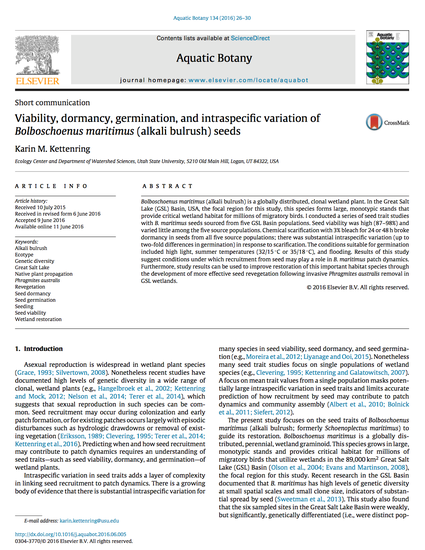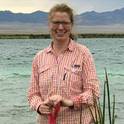
Article
Viability, dormancy, germination, and intraspecific variation of Bolboschoenus maritimus (alkali bulrush) seeds
Aquatic Botany
(2016)
Abstract
Bolboschoenus maritimus (alkali bulrush) is a globally distributed, clonal wetland plant. In the Great Salt Lake (GSL) Basin, USA, the focal region for this study, this species forms large, monotypic stands that provide critical wetland habitat for millions of migratory birds. I conducted a series of seed trait studies with B. maritimus seeds sourced from five GSL Basin populations. Seed viability was high (87–98%) and varied little among the five source populations. Chemical scarification with 3% bleach for 24 or 48 h broke dormancy in seeds from all five source populations; there was substantial intraspecific variation (up to two-fold differences in germination) in response to scarification. The conditions suitable for germination included high light, summer temperatures (32/15 °C or 35/18 °C), and flooding. Results of this study suggest conditions under which recruitment from seed may play a role in B. maritimus patch dynamics. Furthermore, study results can be used to improve restoration of this important habitat species through the development of more effective seed revegetation following invasive Phragmites australis removal in GSL wetlands.
Disciplines
Publication Date
2016
DOI
https://doi.org/10.1016/j.aquabot.2016.06.005
Citation Information
Kettenring, K. 2016. Viability, dormancy, germination, and intraspecific variation of Bolboschoenus maritimus (alkali bulrush) seeds. Aquatic Botany 134:26-30. https://doi.org/10.1016/j.aquabot.2016.06.005.
